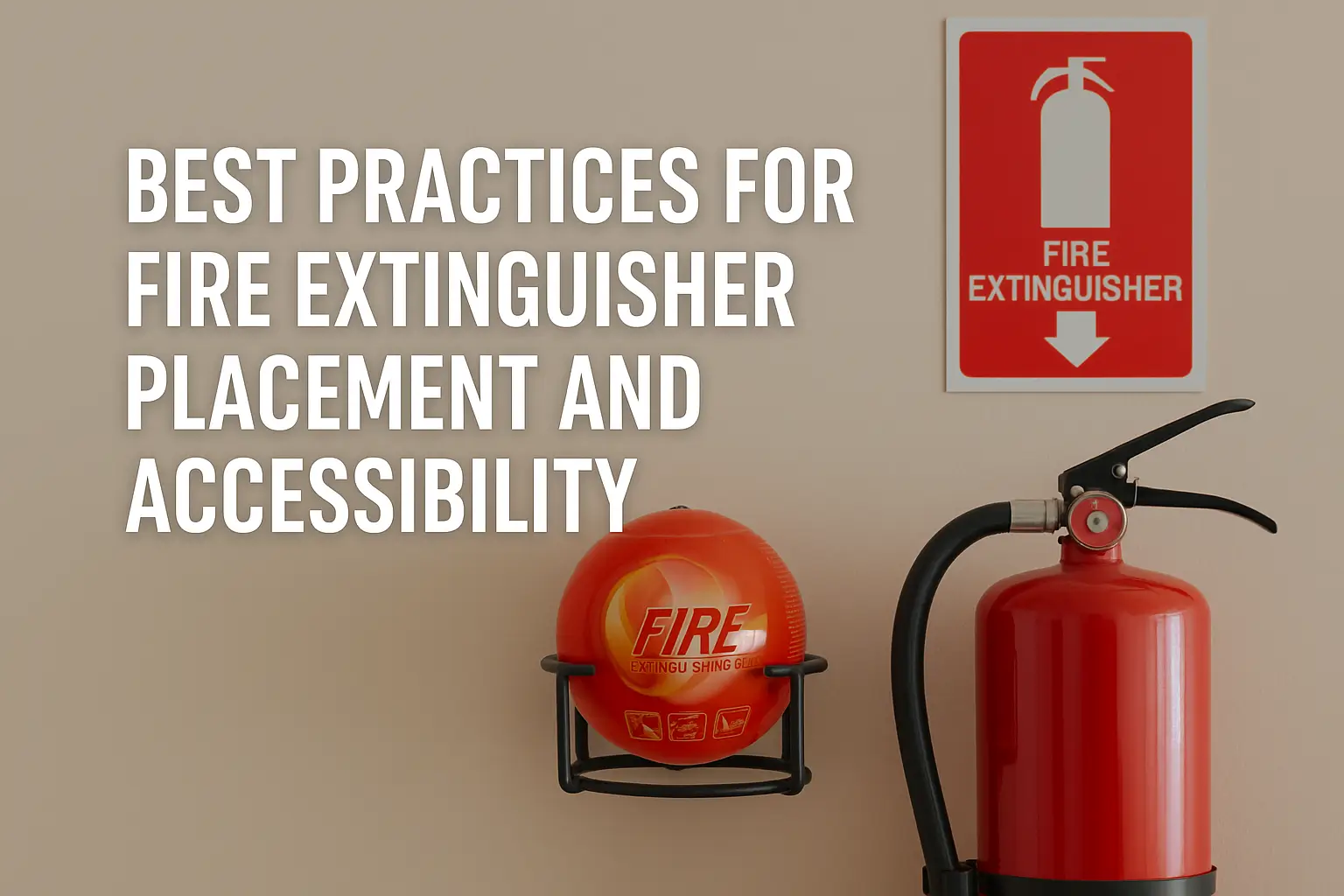Ensuring the right placement and accessibility of fire extinguishers is a fundamental part of any fire protection strategy. Whether in residential spaces, office complexes, industrial zones, or public buildings, the presence of a fire extinguisher alone does not guarantee safety. Proper installation, visibility, and maintenance play a critical role in ensuring that this equipment can be relied upon in the event of an emergency.
For fire extinguisher manufacturer in India and building safety managers alike, adopting best practices for extinguisher placement is essential to protect both life and property.
Why correct placement of fire extinguishers is essential
The real effectiveness of any fire extinguisher ball, fire extinguisher cylinder, or fire fighting equipment in India lies in how quickly it can be accessed when a fire breaks out. Experts agree that during a fire emergency, every second counts. If an extinguisher is hidden, blocked, or placed too far from high-risk zones, it can lead to serious consequences.
According to safety guidelines including those from NFPA (National Fire Protection Association), correct installation distances, visibility, and obstruction-free mounting are non-negotiable standards for fire safety.
Complying with NFPA 10: Distance matters
The NFPA 10 code outlines travel distances for accessing extinguishers:
- Class A fires (paper, wood, cloth) – within 75 feet
- Class B fires (flammable liquids) – within 50 feet
- Class K fires (kitchen oils/grease) – within 30 feet
Evaluating a building’s layout and identifying risk-prone areas ensures that extinguishers are always within reach. Fire extinguisher manufacturers in India increasingly work with safety consultants to help design safe and accessible layouts using this data.
Wall mounting: Standard positioning protocols
Proper mounting of fire extinguisher cylinders ensures they are both visible and easy to access. As per standard practices:
- The handle must be no more than 5 feet above ground level.
- For heavier extinguishers (over 40 lbs), this is reduced to 3.5 feet.
- The base should be at least 4 inches above the floor.
These placement rules help prevent damage and obstructions while allowing for quick deployment.
Focus on high-risk areas
Installing fire fighting equipment manufacturer in India should always prioritize zones with greater fire risk. This includes:
- Kitchens and commercial cooking zones
- Electrical switchboards and server rooms
- Industrial and chemical storage units
- Parking garages and workshops
Additionally, It manufacturers recommend placing automatic balls in isolated or high-risk equipment areas, especially where manual access may be delayed.
Ensure visibility and avoid obstructions
One of the most overlooked issues in fire safety is visibility. Even the most advanced fire fighting equipment can become useless if blocked by furniture, storage boxes, or decoration. Maintaining a clear 36-inch radius around each extinguisher is critical.
Proper signage, directional indicators, and wall placards enhance visibility—especially in large warehouses or dimly lit environments.
Protecting extinguishers in public settings
To prevent misuse or tampering, especially in public or semi-public areas like malls, hospitals, and schools, fire extinguisher cabinets are highly recommended. Transparent or labeled covers ensure compliance with accessibility norms while protecting units from theft or accidental damage.
These enclosures are often supplied directly by leading fire extinguisher manufacturers in India and come with built-in alarms or seals to ensure accountability.
Routine inspection and maintenance
Having fire fighting equipment placed correctly is just one side of the coin—keeping it functional is equally important. Regular monthly inspections should check for:
- Physical damage or dents
- Pressure gauge levels
- Expired chemical filling
- Clear and legible operating instructions
- Obstruction-free access
Service logs should be maintained in compliance with local fire safety norms. It manufacturers in India also recommend self-inspection tags for automatic units, ensuring they stay visible and safe.
Empower people through training
No fire equipment is complete without awareness. All occupants or employees should be trained on:
- The exact locations of extinguishers
- When and how to use them
- PASS technique (Pull, Aim, Squeeze, Sweep)
Training reduces panic and improves outcomes in real emergencies. Most top-rated fire extinguisher manufacturers in India offer fire safety training programs alongside product installation.
Role of modern fire extinguisher balls in accessibility
Fire extinguisher balls are increasingly being recognized for their auto-activation and ease of use. These devices require no training and can be placed above potential fire sources or electrical panels.
They automatically deploy when they come into contact with a flame, releasing a dry powder that suppresses the fire effectively. Ideal for remote corners and unattended rooms, these devices are gaining popularity as essential fire fighting equipment in India.
Conclusion
Ensuring correct placement and accessibility of fire extinguishers is not just a compliance measure—it’s a life-saving necessity. As urban structures grow complex and fire risks evolve, having a well-planned extinguisher layout, supported by regular checks and user training, is critical.
With rising demand for automatic fire extinguisher balls, safer mounting systems, and reliable fire extinguisher cylinder, India’s fire safety ecosystem is becoming more proactive. Manufacturers, building owners, and safety officers must work hand in hand to prioritize prevention over reaction.
FAQs:
Q1. What is the ideal height for mounting a fire extinguisher cylinder?
A: The handle of the extinguisher should not exceed 5 feet from the floor, and for heavier units, the maximum height should be 3.5 feet.
Q2. Where should fire extinguishers be placed in a building?
A: High-risk areas such as kitchens, electrical rooms, storage spaces, and near flammable materials should always have visible and accessible fire extinguishers.
Q3. How often should fire extinguishers be inspected?
A: Monthly checks are recommended to assess physical condition, pressure levels, visibility, and access.
Q4. Are fire extinguisher balls effective for all fire types?
A: Fire extinguisher balls are mainly effective for Class A, B, and C fires. Placement should be based on manufacturer guidelines and hazard assessment.
Q5. Who can install or certify the placement of fire extinguishers?
A: Certified fire protection contractors or fire extinguisher manufacturers in India can assist with compliant installation and documentation.

